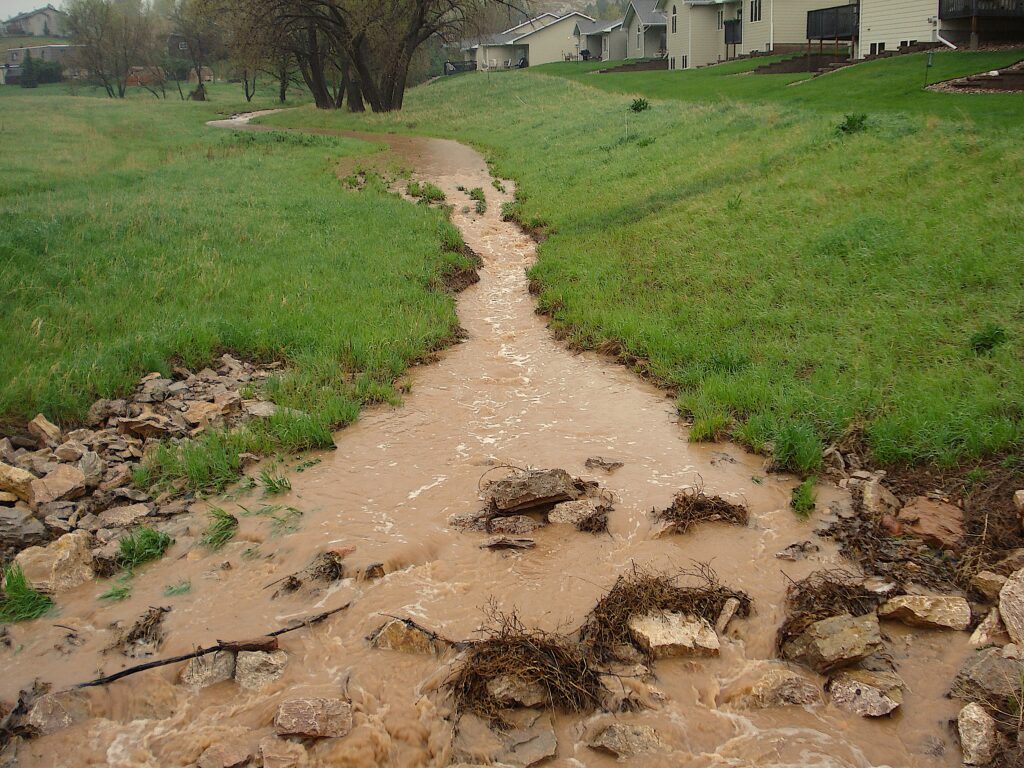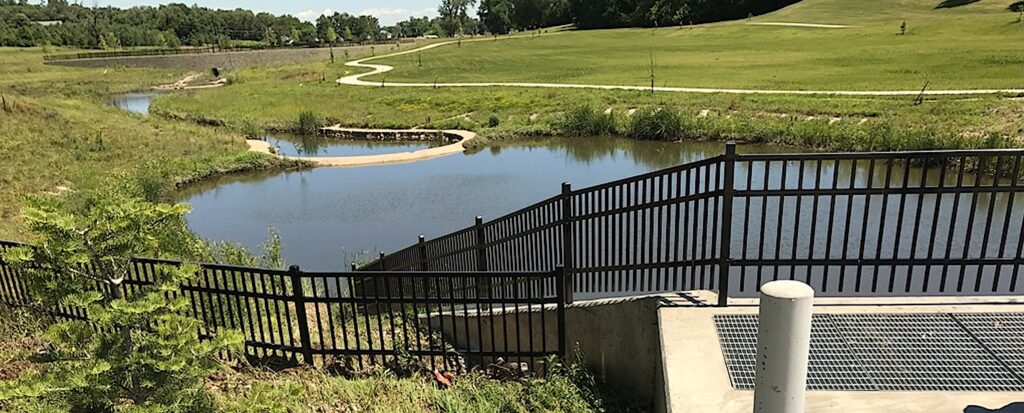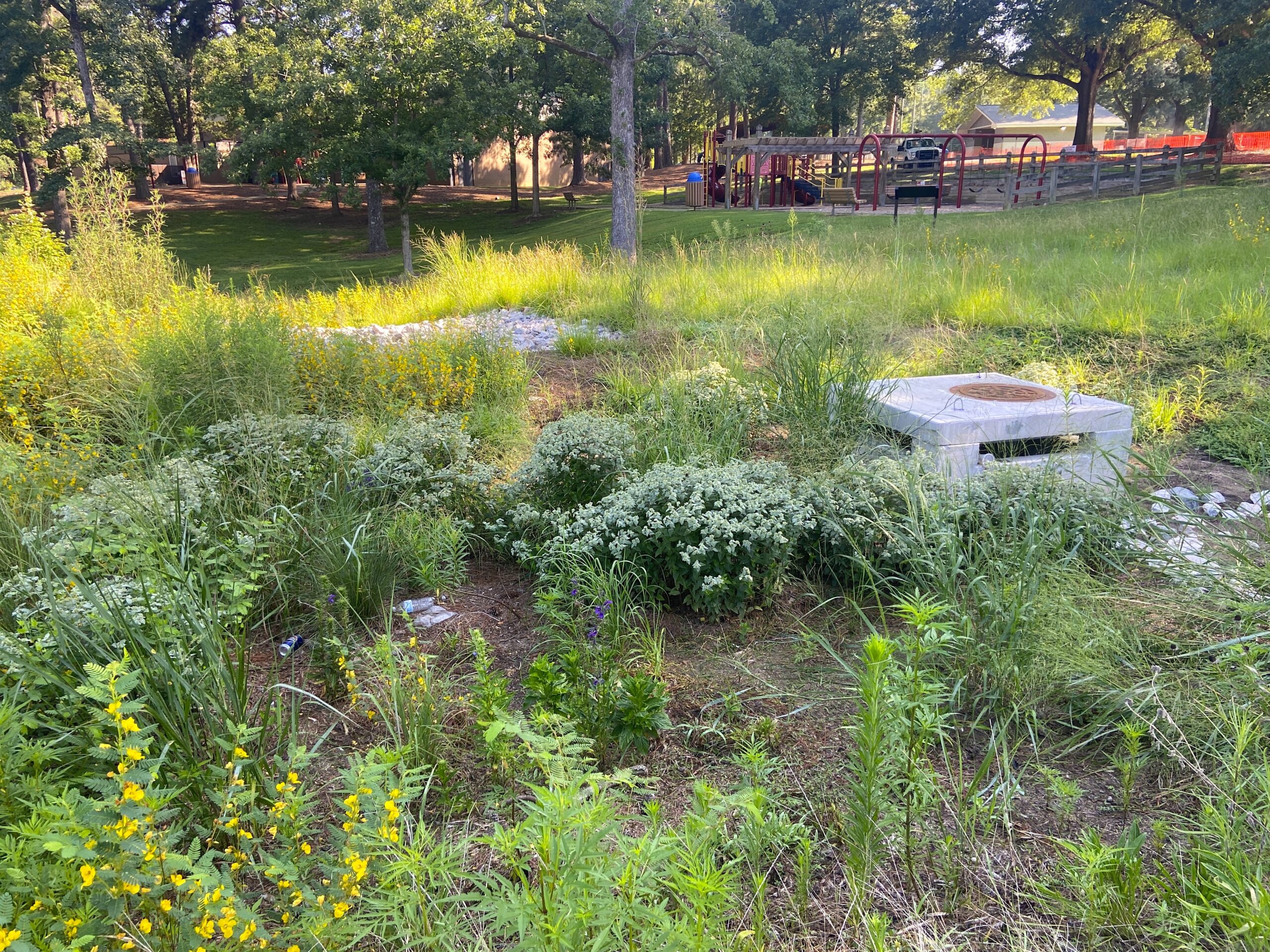The Guide to Coastal Living
From Streets to Sea: Addressing Stormwater Runoff

Stormwater from rain or melting snow runs across rooftops, roads, and other impervious surfaces into gutters or pipes that directly lead to streams. This water collects pollutants as it flows that ultimately lead to our oceans.
As a result, stormwater runoff is a big issue for coastal communities that rely on healthy waters for fishing, recreation, tourism, and drinking supplies. In addition, coastal areas are at much higher risk of the adverse effects of runoff because of extreme storms, sea level, and tides — all of which can cause overwhelmed stormwater systems to fail.
But to some extent, coastal residents can manage stormwater on their properties and in their neighborhoods, alleviating some of the vulnerability to flooding in locations on low-lying land and near bodies of water.
The Adverse Effects of Stormwater
Flooding from stormwater can damage foundations, retaining walls, driveways, and septic systems, resulting in costly repairs. Stormwater also can erode topsoil that is critical for plants that otherwise would absorb excess water.
Areas with a lot of impervious surfaces and intense development practices prevent water from soaking into the ground and allow stormwater to quickly leave a property. Clearing trees and grading land can change how rainfall flows off a property, also causing water to move in more concentrated flows. Water that quickly leaves a property sometimes causes flooding downstream and alters stream channels — and it carries harmful pollutants into other areas.
Stormwater can carry fertilizer and other chemicals, animal waste and bacteria, debris, and litter. Some pollutants can cause algae blooms, which can be toxic to humans and animals — including pets that have gotten sick after contact with neighborhood stormwater ponds that are experiencing blooms.
Some chemicals — such as Polycyclic Aromatic Hydrocarbons from asphalt, tires, vehicle leaks, sealants, and other sources — travel in stormwater and can contaminate fish and shellfish, and also are toxic to humans.
Debris and litter can block stormwater drains, and litter that reaches waterways will eventually end up at beaches. North Carolina Sea Grant researchers are conducting studies to better understand how litter from inland travels to our coasts.

How Property Owners Can Reduce Stormwater Runoff
The slow it, spread it, sink it approach is very effective for treating stormwater in residential areas. Longtime coastal residents understand that given a few days, standing water after a storm will typically absorb into the ground naturally.
Stormwater can be slowed by disconnecting pathways that quickly move it off a property. Spreading stormwater on permeable surface areas provides a better opportunity for the ground to absorb it.
Although some homeowners have concerns about standing water, it typically soaks into the ground within one to three days of a rain event. Residents can take steps to prevent mosquitoes if water has been standing for five or more days.
Rainscapes are effective landscaping strategies for decreasing the amount of stormwater runoff on your property. They include:
• Disconnecting and Redirecting Downspouts
To slow the flow of stormwater, redirect downspouts from driveways to a garden or lawn, using a downspout extension, or direct water into a rain barrel. Avoid disconnecting downspouts in areas too small for proper drainage, that are within 10 feet of a retaining wall, or that might affect a neighbor.
• Installing Rain Barrels and Cisterns
One of the largest impervious surfaces on a property is the roof, but rain barrels and cisterns can collect roof water. During summer months, upwards of 40% of water consumption is for outdoor use; rain barrels and cisterns can be a cost-effective source of non-potable water, especially during dry periods.
• Incorporating Rain Gardens
Rain gardens are stunning lawn features that create shallow swales (vegetated channels) where stormwater can collect. The surface of rain gardens includes layers that help water permeate into the ground. The size of a rain garden can vary based on the space available and amount of impervious surface. In addition, rain gardens are a great place to plant local grasses, flowers, and shrubs that attract birds and pollinators.
• Planting Trees
Trees soak up water with their complex root systems. Their leaf canopies also slow and lessen the amount of water that reaches the ground, decreasing runoff. In addition to their beauty, trees also provide a host of other benefits to property owners, such as natural habitat, shade that can reduce energy costs, and improved air quality.
• Reducing Impervious Surfaces
Alternatives to traditional pavement, such as permeable or pervious pavement or interlocking pavers, allow water to sink into the ground.
• Planting a Green Roof
A layer of plant material that absorbs water on the roof can help to slow stormwater runoff. This is an increasingly popular and effective approach, especially in urban areas with limited space.
As with any landscaping feature, these stormwater solutions require care and maintenance to ensure that they are functioning at their fullest capacity. Maintenance can include watering new plants, weeding, and cleaning rain barrels and downspouts.
Last, some areas offer special opportunities for residents who are looking to install stormwater solutions; examples include the Heal Our Waterways program in Wilmington and Raleigh Rainwater Rewards. Before beginning an installation project, see if your city or town offers a similar program.

How Neighborhoods and Communities Can Address Stormwater Runoff
Similar to strategies that property-owners can use, there are several stormwater solutions available at the neighborhood and community levels that will preserve aesthetic value, promote plant growth, and reduce stormwater runoff.
• Install a neighborhood rain garden in place of an ornamental garden or grassy area.
• Incorporate language in HOA covenants that supports rain gardens and native plants.
• Use rain barrels and cisterns around community buildings and pavilions.
• Plant trees throughout the neighborhood.
• Update neighborhood stormwater ponds with easy landscaping decisions and plants that help clean the water and prevent erosion. Planting along the perimeter of stormwater ponds can also deter troublesome Canada geese.
• Designate or enhance a community location to become a natural stormwater management area. Creating a community space for outdoor recreation and reducing stormwater runoff pollution in local waterways is a win-win situation. Success stories from local North Carolina communities include Currituck Community Park and Wilmigton’s J.E.L. Wade Park.
Residents can engage their community to learn more about stormwater solutions and work together to promote the natural beauty and maximize the environmental benefits of their area. Community members can host rain garden planting and maintenance days in common spaces. Creek cleanups, in particular, are a great way to keep drains and streams free of debris that can cause neighborhood flooding.
Many hands make light work.
The Guide to Coastal Living provides quick and practical information about how to live and thrive in a coastal environment.
lead photo: Adobe Stock.
UNC Wilmington’s Anika Pruim and Ashley Caine are graduate and undergraduate interns respectively for North Carolina Sea Grant. Mariko Polk is North Carolina Sea Grant’s coastal processes specialist.


